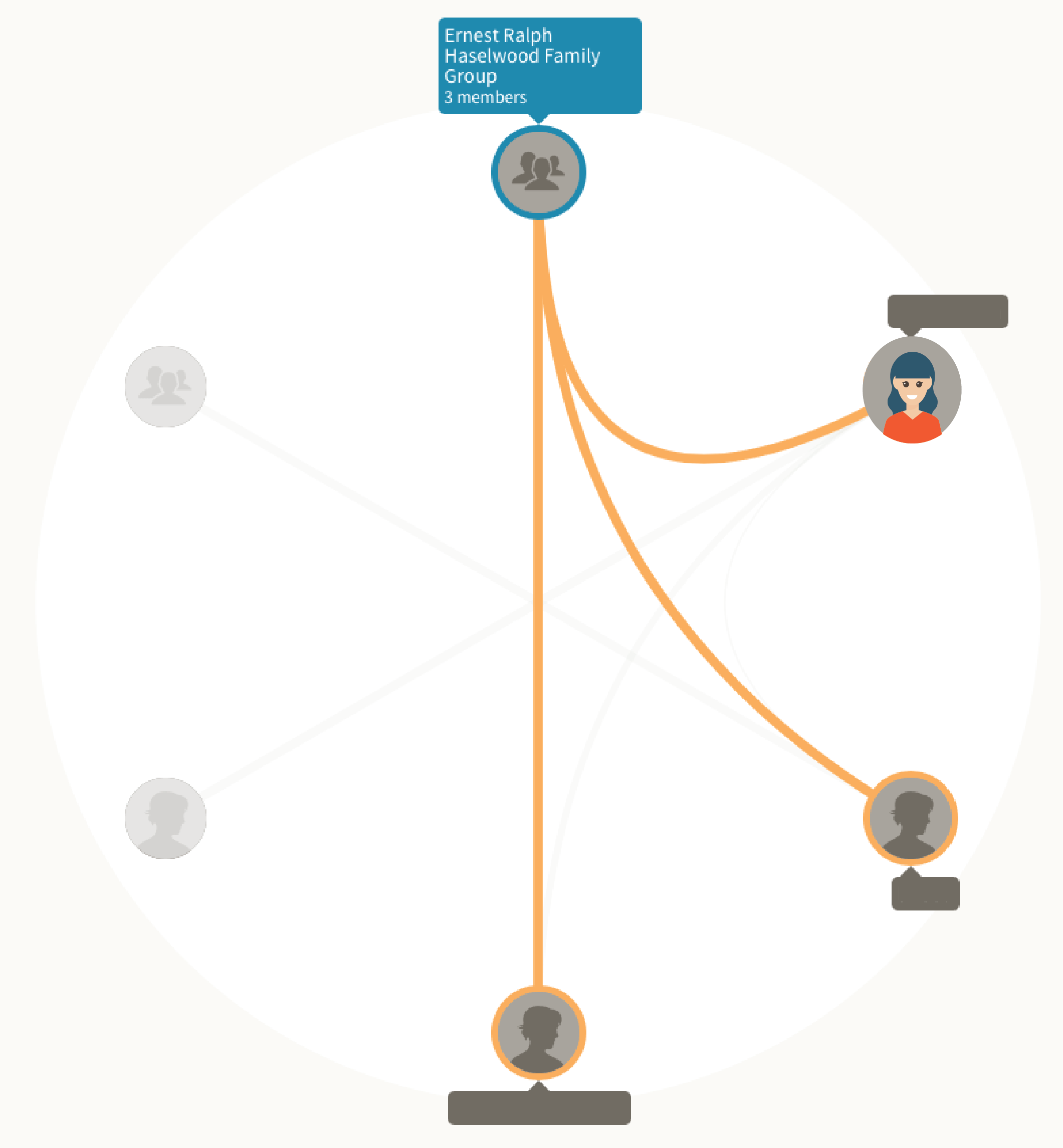DNA Circles at AncestryDNA can get problematic when participants’ trees are unverified. This is why.

Adding people to a family tree without verifying the connection is a fairly common genealogical practice. This happens a lot when people “graft” information from another online tree.
In addition to the problems this can create in your tree, it can create problems when you start looking at genetic connections. We have received a few inquiries about this topic here at Genealogy Gems, and I chatted with a fellow genealogist about this at a recent conference.
The practice of copying online trees factors most heavily in the DNA Circles and New Ancestor Discoveries (NAD) at AncestryDNA. You will remember from our previous conversations that these tools are like parties that your DNA has secured your tickets to attend. Each of these parties is “hosted” by one of your ancestors, in the case of the DNA circle, and a presumed ancestor, in the case of a NAD. Sometimes we catch ourselves declaring that our membership in the DNA circle “proves” our connection to the party host.
But we must be careful. Because it does not.
 “Proves” is too strong of a word. All your membership in the DNA circle can really tell you is that you have a genetic connection to those marked with the orange line. Those with the grey connecting lines have a DNA connection to some of the circle members, but not to you. Placing the name of an ancestor on the cover of this gathering does not guarantee that the named person is your common ancestor. It is just a suggestion; a hint.
“Proves” is too strong of a word. All your membership in the DNA circle can really tell you is that you have a genetic connection to those marked with the orange line. Those with the grey connecting lines have a DNA connection to some of the circle members, but not to you. Placing the name of an ancestor on the cover of this gathering does not guarantee that the named person is your common ancestor. It is just a suggestion; a hint.
Think about this for just a second. Let’s say that Joan does a bit of research and decides that her immigrant ancestor’s father is Marcus Reese, born in 1823 in Wales. She adds this to her pedigree chart. She sees on a census record that he had four children, one of whom shared the name of her ancestor, William, and adds those to her chart as well.
Months later, Charlotte is researching her Mary Reese and sees Mary listed on Joan’s pedigree chart as the child of Marcus. She knows Mary’s father was born in Wales and adds Marcus to her pedigree chart telling herself that she will go back later and double check. And so on.
After a while, we have 7 people all connected back through Marcus and his four children, and they all independently decided to get their DNA tested through Ancestry.com.
Ancestry sees their shared DNA and that they have all listed Marcus Reese as their common ancestor. So they create a DNA circle for the seven of them, with Marcus Reese at the head.
Ancestry did not look at the number of cited sources or the myriad of other genealogical possibilities about how these seven individuals could all be related to each other. It saw a genetic connection and a genealogical hypothesis, and it presented them to you in the form of a DNA circle.
The genetic evidence supports a single common ancestor for these 7 people, but it certainly does not have to be Marcus Reese. You can become more certain as you gather the traditional genealogical evidence that you would in any other case. As your documentation mounts, so will your confidence, with the DNA acting like an invitation to keep searching for further evidence of your connection.
 If you enjoyed this post, you’ll love my series of DNA for genealogy quick guides. Each laminated guide–with quick, clear text that helps you act on what you learn–is targeted to a specific DNA topic, from “Getting Started” to the three types of DNA tests you can take to understanding your results with testing companies AncestryDNA, FamilyTreeDNA and 23andMe. Why not grab the “super bundle” of all 10 guides? You can also shop for them individually here.
If you enjoyed this post, you’ll love my series of DNA for genealogy quick guides. Each laminated guide–with quick, clear text that helps you act on what you learn–is targeted to a specific DNA topic, from “Getting Started” to the three types of DNA tests you can take to understanding your results with testing companies AncestryDNA, FamilyTreeDNA and 23andMe. Why not grab the “super bundle” of all 10 guides? You can also shop for them individually here.
Disclosure: This article contains affiliate links and Genealogy Gems will be compensated if you make a purchase after clicking on these links (at no additional cost to you). Thank you for supporting Genealogy Gems!
